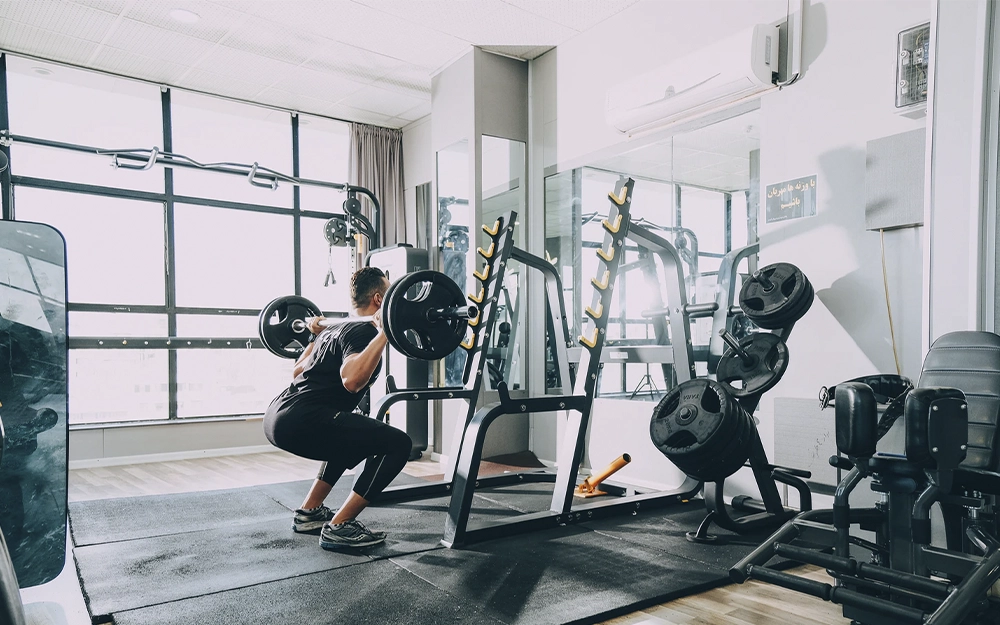
3 Keys To Getting The Most Out of Your Squats For Running And Life
Squatting is a movement that dates back to the very beginning of
humankind. At one stage or another, our ancestors would have been
found squatting behind a bush ready to pounce on an unknowing
dinner-to-be. Fast forward a couple of million years to the present day,
and things are not so different. We might not be catching our dinner
on a daily basis, but it’s certainly not uncommon to see people
lurking around the gym waiting to pounce on the first free squat-
rack.
Squatting is a movement that has, and continues to, accompany
humans throughout every stage of our lives. The squat is how a child
transitions from crawling to walking, how a parent bends down to
pick up that child, and how that child’s grandparents get up and
down from their rocking chair.
The squat is an integral part of human movement, but unfortunately
it has been over-complicated to the point that it’s sometimes hard to
know exactly what we SHOULD or SHOULD NOT be doing.
Today, we are going to break down a couple of key points to ensure
that your squat is as good as it can be FOR LIFE.
1. Don’t let the spine and lower leg angles intercept
– A foolproof way of keeping our body in a good position
throughout a squat is to be conscious of our spine and lower
leg angles.

As can be seen in the picture above, when these angles
intersect, the lower back and knees are put under a lot of
pressure. Long-term, this leads to increased wearing of the
joints and increased risk of injury.

When the angles are close to parallel, our weight stays back
on the heels and our spine can maintain its natural curve. This
position optimises the weight distribution and load-bearing
through our spine, hips and knees.
2. Focus on the FIRST and LAST 20 degrees of the squat
– When squatting, we often forget about the very beginning
and end of the movement. We call the first and last 20
degrees our “Inner Range”.
– To start with, we “drop” the first 20 degrees with minimal
control, before “catching” our body weight again when
glutes and leg muscles kick in.
– When straightening to complete our squat, we often use the
upwards momentum to “pop” our hips into extension rather
then controlling the transition.
– This first and last 20 degrees may seem somewhat
insignificant, but our Inner Range strength is functionally
important for walking and running. When our foot first
contacts the ground, hips and knees can be around 20
degrees, so weakness here means you sink, losing efficiency
and increasing injury risk.
– During your squat, focus on activating the butt and front of your
thigh (quads) through Inner Range, controlling the
movement for functional running strength.

3. Can the Knee go in front of the toes? What Does The Research Say:
– We have probably all been told at some point to keep our
knees behind our toes during a squat to limit “shearing
forces” or “compression” on the knees.
– While there is a minor increase in shearing forces when the
knees go past our toes (around 28% increase), this leads to a
much bigger risk in the lower back.
– Research shows if knees don’t reach the toes, shearing
forces in the lower back go up by OVER 1000%. That’s 10
times the load!

The take-home message is, don’t be afraid to let your knees go a
couple of centimetres past your toes at the bottom of a
squat. Yes, this does cause a small increase in stress on the
knee, but it pales in comparison to the forces going through
lower back and hips if done incorrectly.
Squats are a great way to strengthen your lower back and legs and
are a great inclusion in all exercise programs. Hopefully, these quick
tips can help you to feel more confident with getting the most out of
squats for running and for life.
Ps. National Squat Day is coming up next month on the 20th of April,
mark it on the calendar!
If you have any pain or discomfort associated with squats or if you
have existing lower back, hip or leg injuries, chat to your healthcare
professionals to ensure that you’re staying safe while getting strong.
Physio Drew
(Drew Arundell)






